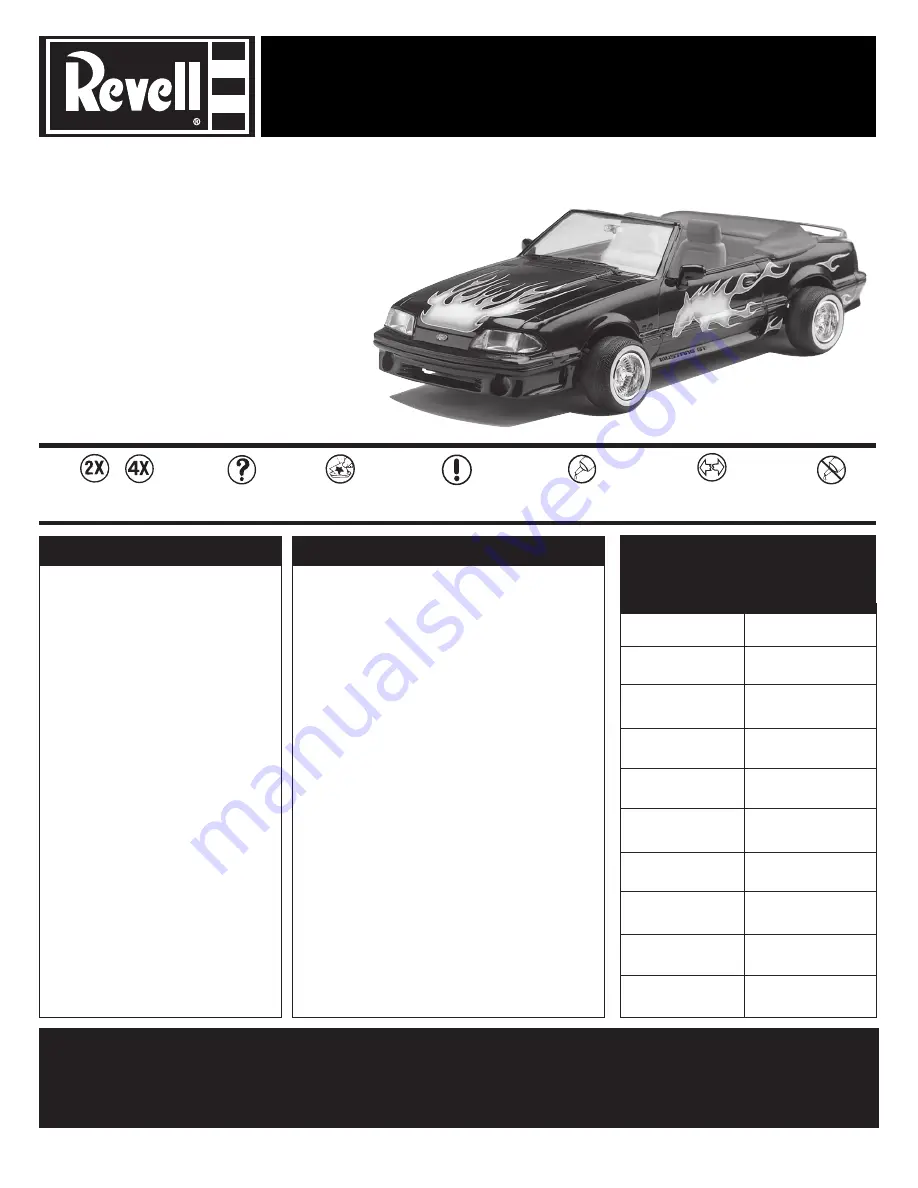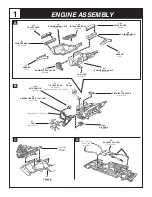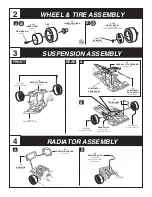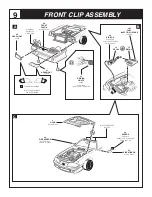
Aluminum
Flat Black
Flat Red
Flat White
Gloss Black
Gloss Red
Gunmetal
Satin Black
Steel
Turn Signal Amber
Aluminum
Noir mat
Rouge mat
Blanc mat
Noir lustré
Rouge lustré
Bronze
Noir satiné
Acier
Feu de virage ambre
If you have any questions or comments, call our hotline at:
(800) 833-3570
or, please write to:
Revell-Monogram Consumer Service Department, 8601 Waukegan Road, Morton Grove, Illinois 60053
Be sure to include the plan number (85234500200), part number, description, your return address and phone number.
Visit our website: www.revell-monogram.com
Mustang Convertible Lowrider
KIT 2345
85234500200
* REPEAT SEVERAL TIMES
* A REPETER PLUSIEURS FOIS
* CEMENT TOGETHER
* A COLLER
* ALTERNATIVE ASSEMBLY
* ENSEMBLAGE ALTERNATIVE
* REMOVE AND THROW AWAY
* A RETIRER ET JETER
* DO NOT CEMENT
* NE PAS COLLER
* OPTIONAL PARTS
* PIECES EN OPTION
* DECAL
* DECAL COMANIE
REVELL-MONOGRAM, LLC Morton Grove, IL. Copyright © 2001 All rights reserved.
Ever since it’s inception in 1964, the Mustang has been America’s “fun” car. The kind of car an owner can look at
and say “Ok, what can I do with this baby?”. As a result, the Mustang has become a very personal car and it doesn’t hurt
that it’s also very adaptable to current trends.
Of course, the most current trend is the lowrid-
er
craze and now,
the custom crowd has discovered that the Mustang looks right at home
with
a set of lowrider wheels and some wild, colorful body graphics.
The Mustang has been redesigned sever-
al
times since the little pony trotted on the 1960’s scene, but
no matter what body style, it always looks as good
as a convertible. Build your lowrider with the top
up or down, paint it any color you want, but by
all
means, have fun with it!
Your Revell kit includes quality inject-
ed
molded
plastic parts with custom wheels, detailed engine
and chassis, and colorful
decals to make your kit stand out in the crowd!
This paint guide is provided to
complete this kit as shown on the box
.
Ce guide de peinture est fourni pour reproduire le
modèle réduit qui apparaît sur la boîte.
* Study the assembly drawings.
* Each plastic part is identified by a number.
* In the assembly drawings, some parts will be
marked by a star (
★
) to indicate chrome
plated plastic.
* For better paint and decal adhesion, wash
the plastic parts in a mild detergent solution.
Rinse and let air dry.
* Check the fit of each piece before cementing
in place.
* Use only cement for polystyrene plastic.
* Scrape plating and paint from areas to be
cemented.
* Allow paint to dry thoroughly before
handling parts.
* Any unused parts may be discarded.
DECAL APPLICATION INSTRUCTIONS
1. Cut desired decal from sheet.
2. Dip decal in water for a few seconds.
3. Place wet decal on paper towel.
4. Wait until decal is movable on paper backing.
5. Place decal in position on model, face up
and slide backing away.
6. Press out air bubbles with a soft damp cloth.
7. Milkiness that may appear is for better decal
adhesion and will dry clear. Wipe away any
excess adhesive.
8. Do not touch decal until fully dry.
9. Allow the decals 48 hours to dry before
applying clear coat.
NOTE: Decals are not compatible with
setting solutions or solvents.
READ THIS BEFORE YOU BEGIN
LIRE CE QUI SUIT AVANT DE COMMENCER
* Etudier les schémas de montage.
* Chaque pièce en plastique est identifiée par un numéro.
* Sur les schémas de montage, certaines pièces sont mar
quées d'une étoile (
★
) pour indiquer qu'elles sont en
plastique chromé.
* Pour une meilleure prise de la peinture et des autocollants,
laver les pièces en plastique avec une solution détergente
peu concentrée. Les rincer et les laisser sécher à l'air.
* Vérifier que chaque pièce s'ajuste bien avant de la coller
en place.
* N'utiliser que de la colle pour polystyrène.
* Gratter les parties à coller pour enlever le chrome et la peinture.
* Laisser la peinture bien sécher avant de manipuler les pièces.
* Toute pièce inutilisée peut être jetée.
DIRECTIVES D'APPLICATION DES AUTOCOLLANTS
1. Découper l'autocollant désiré de la feuille.
2. Tremper l'autocollant dans de l'eau pendant quelques secondes.
3. Placer l'autocollant mouillé sur une serviette en papier.
4. Attendez que l'autocollant puisse être déplacé sur son sup
port en papier.
5. Mettre l'autocollant en position sur le modèle face sur le
dessus et faire glisser le support pour l'enlever.
6. Appuyer avec un chiffon doux humide pour éliminer les bulles
d'air.
7. La substance laiteuse qui peut apparaître est destinée à
améliorer l'adhésion de l'autocollant et devient incolore au
séchage. Essuyer pour enlever tout excédent d'adhésif.
8. Ne pas toucher l'autocollant tant qu'il n'est pas bien sec.
9. Laisser l'autocollant sécher pendant 48 heures avant
d'appliquer une couche transparente.


























